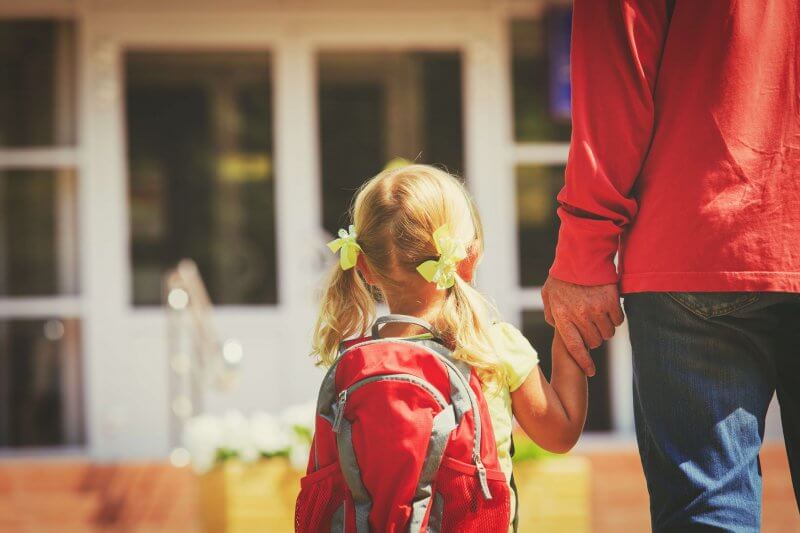
Child Protection Week
Noel MacNamara speaks about Child Protection Week and guides us through some of the key essentials we need in order to have an effective system where children's rights are heard and respected.
This blog article was written by Noel Macnamara,
National Manager Policy and Research at the Australian Childhood Foundation.
It’s been over a week since child protection week. A great opportunity for us to reflect on how we care for the more vulnerable children and young people in our community. I am reminded of the words of the late UN Secretary General Kofi Annan: “There is no trust more sacred than the one the world holds with children. There is no duty more important than ensuring that their rights are respected, that their welfare is protected, that their lives are free from fear and want and that they can grow up in peace.”
In Australia 1 in 33 children are subject to a child protection investigation or response. 74% of the children who received child protection services in 2016/2017 were repeat clients. The number of children coming into the Out of Home Care system has doubled in the last 10 years. 32,600 children have been in out-of-home care for 2 years or more (AIHW, 2018).
Indigenous children are overrepresented in all parts of the child protection system, such as out-of-home care and other interactions. In 2007-08 the rate of Indigenous children in out-of-home care was seven times the rate of non-Indigenous children. Ten years later, the rate of Indigenous children is 10 times that of non-Indigenous children.
There have been more than 40 major inquiries and reports into child protection since 1997. The same recommendations arise again and again. These Inquiries into Australian child protection systems have consistently highlighted issues of inadequate workforce capacity and poor quality of practice and decision making. A lack of specialist Indigenous services and poor Indigenous cultural awareness are well documented findings, as is the need for better coordination between different organisations and departments. Despite all of the inquiries, the Child Protection Systems Royal Commission in 2016 found that concerns about practice issues have, at best, continued unabated.
So, what do we need to do to ensure that children’s rights are respected, that their welfare is protected, that their lives are free from fear and want? What are the essentials of an effective system?
- Respect what children and young people have to say – abuse is invariably about the abuse of power within an established relationship. The system must therefore facilitate and encourage children to share their concerns. This applies especially to vulnerable children who are frequently ignored or stereotyped. Young offenders are particularly vulnerable and their allegations ignored, as recent events in the Northern Territory and other States have shown.
- Develop new service models for Indigenous families that are responsive to the specific forms of disadvantage faced by Aboriginal children and families, and the differing cultural contexts. We must move to a model that extends self-determination and self-management by Aboriginal and Torres Strait Islander people to the management of the welfare of ATSI children and families, including child protection services and out-of-home care.
- Make safeguarding everybody’s business – we must all be alert to the concerns of children and young people and cannot leave everything to child protection services around the country.
- Valuing relationship based practice. Relationships with families are the most powerful tools to facilitate change and when they are trusting, empathic and authoritative, can be reparative. Excellent child protection work is about creating relationships with families, which provide opportunities for them to change, and which are clear about the consequences if change cannot be achieved.
- Build a shared systemic approach. Organisations: government and non-government must consult and work in partnership and share information – no child died because information was shared.
- Review closely and apply learning from research, formal inquiries and past evidence about practice. As Dorothy Scott has pointed out there is still a significant gap between “what we know and what we do to protect vulnerable children”.
- Create a culture of respect within organisations – respect for parents, children and young people – and also for staff. Ensure practice guidance is clear, coherent, consistent, legal, accessible and comprehensible. It must allow space for judgement and creativity but also provide a sufficiently coherent framework for co-operation between practitioners in the many different agencies involved. The Victorian Auditor General found child protection workers struggled to maintain good mental health in the face of unreasonable workloads and inadequate departmental support. This type of culture reduces effectiveness and increases risk for children.
- Governments must recognise this all costs money and needs professionals with time, skills and support. In a report on the child protection system to the Tasmanian Government in 2011 they stated: “The personal, economic and social costs of child abuse are significant. If the estimates take into account such things as health system expenditure, additional educational assistance, protection programs, productivity losses, government expenditure across jurisdictions and other factors that make up a ‘burden of disease’ over a lifetime, the costs extend into the billions”.
I started with a quote from Kofi Anan. I conclude with a quote from Nelson Mandela:
“There can be no keener revelation of a society’s soul than the way in which it treats its children”.
